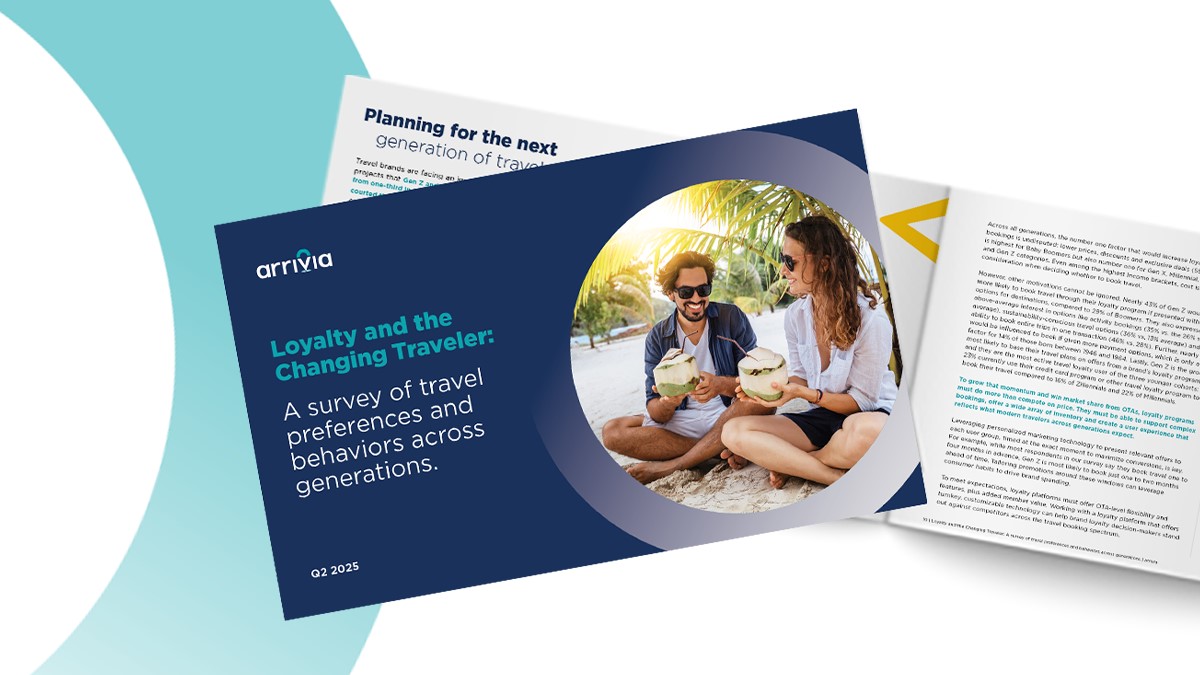You can’t beat the value of cruise travel, especially right now. Coming off two-and-a-half years of shutdowns and restrictions due to COVID-19, cruise lines are making it very difficult for consumers to say no to a vacation at sea. According to cruise deal aggregator Cruise Sheet, the average cruise fare was down 17% in June and July 2022 compared to 2019. That’s significant when you consider that during this same period, airlines, car rental agencies and hotels have raised their rates by as much as 55% in some cases due to soaring inflation and demand.
The current affordability of cruising coincides with strong demand for this type of travel. In arrivia’s “Ready to Board” survey of 1,500 American consumers between November 2021 and 2022, 80% of respondents said they were either planning a cruise or considering booking one in the next two years.
Our recent internal booking and customer preference data show that demand hasn’t wavered, with many consumers willing to travel at the last minute for a good deal. While cruises typically have long booking windows, those timeframes have varied as travelers weighed up their restrictions-related uncertainty with their desire to a cruise. It’s a dynamic that’s driven a spike in travel insurance attached to cruise bookings in the first quarter of 2022, which we’ve also seen reflected in the arrivia platform.
The elimination of testing and vaccination requirements for cruise travel by the CDC in July removed an obstacle that kept many would-be travelers from booking and led to a surge in booking volumes and a return to baseline for cruise travel insurance sales.
The cruise’s competitive pricing and healthy consumer demand benefit travel loyalty and rewards providers. Programs that don’t offer cruises, or don’t have a sophisticated cruise portfolio, should take note of this opportunity to expand their offerings and deliver more value to their members.
Loyalty and the power of value
Value is at the heart of any loyalty program, travel or otherwise. When it’s challenging to earn and redeem points, and when there are few or limited redemption options, members feel like they aren’t deriving enough value from their program, hindering its ability to grow.
The perception that loyalty programs aren’t delivering the value consumers want is quite prevalent. According to our research, about one-third of loyalty program members aren’t sure they’re getting the best value from their rewards. This view isn’t one-sided, however; about 30% of industry leaders say they struggle to demonstrate the value of their programs and nearly 20% struggle to offer members the variety of rewards they want.
By integrating cruise into their portfolios, travel loyalty providers can help change that perception by offering a travel option consumers demand and clearly find to be good value.
For loyalty program members using points to book their trips, lower cruise fares don’t just mean the ability to book trips for less; it also means that they can do more while on their journey, enabling them to get more from their vacation and improving their overall experience. A member who uses points to pay for a cruise instead of cash is more likely to spend on excursions or the on-board spa than a passenger who had to pay out of pocket for their trip, driving more revenue to the cruise line and engagement to the loyalty program.
Cruise: a sure bet for loyalty programs and their members
Though current fares might incentivize first-timers to book, cruising has always presented good value for vacationers looking for an all-inclusive experience coupled with the ability to visit many places in one trip. That’s why loyalty providers can be sure their members will still recognize the value of a cruise even if prices rise.
They can also continue to use the value of their member base to negotiate exclusive deals with the cruise lines through exclusive pricing that isn’t available on public platforms like online travel agencies. Why would a cruise provider want to do this? Because travel suppliers recognize groups with memberships as a great way to reach new cruisers and are willing to provide enhanced value to attract them.
Loyalty providers with travel rewards and benefits can also include extras that wouldn’t be available to the public, like complimentary shore excursions for members only or room upgrades. The loyalty program can creatively subsidize unique promotions and added incentives to help drive additional bookings and attract new members.
Travel loyalty programs that don’t currently include cruise in their portfolio can still offer this option to members by partnering with a rewards supplier that already has those relationships. Arrivia, for instance, has a long history of working with the cruise industry. We support over 44 different cruise lines offering 30,000+ itineraries and a range of experiences from ultra-luxurious Caribbean escapes to once-in-a-lifetime Alaskan excursions and increasingly popular river cruises. Loyalty programs that use arrivia to power their travel booking platforms rely on this variety to ensure that all members can find attractive redemption options that meet their wants and needs.
By meeting and exceeding these expectations, loyalty programs can grow their membership bases and drive more engagement. With cruise remaining a competitive, high-value choice for vacationers, loyalty program administrators that choose not to include cruise in their rewards portfolios risk being left behind.



